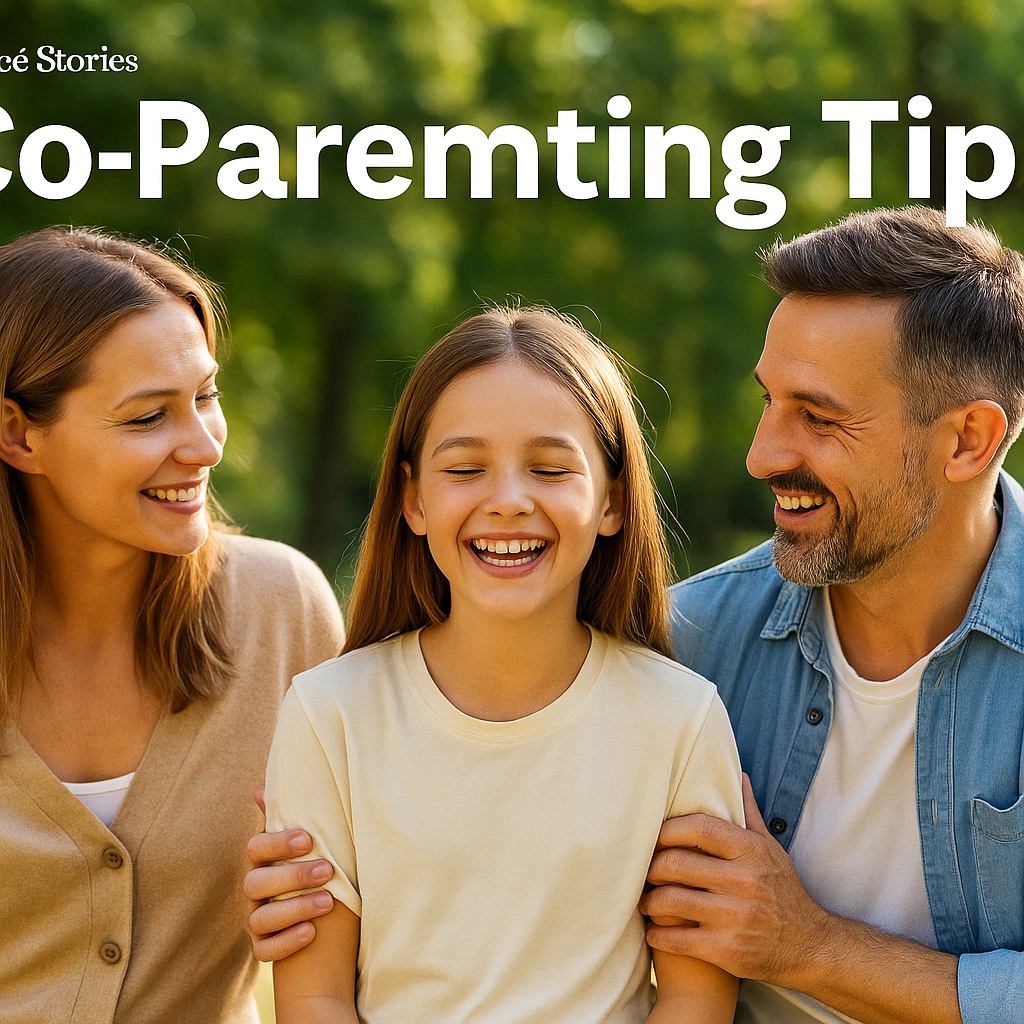
Introduction: Co-Parenting as a New Partnership
Divorce may dissolve a marriage, but it doesn’t dissolve parenthood. For parents sharing custody, co-parenting is both a challenge and an opportunity. When done right, it can provide children with the stability and love they need to thrive. This guide shares in-depth, real-world co-parenting tips to help you create a healthy post-divorce family dynamic that supports your child’s emotional growth and your own peace of mind.
1. Prioritize the Child’s Needs
The foundation of successful co-parenting is a mutual commitment to your child’s well-being above all else. Ask yourselves: What arrangement works best for our child’s emotional, educational, and social needs? Not: What works best for me?
Children benefit most when both parents remain involved, consistent, and supportive—even from separate households.
2. Craft a Comprehensive Parenting Plan
Good co-parenting starts with a clear plan that covers:
- Custody schedules
- School holidays and birthdays
- Transportation logistics
- Rules and discipline methods
- Medical and educational decision-making
Think of it as your co-parenting roadmap. You can revise it over time, but begin with as much clarity as possible to avoid confusion later.
3. Effective Communication: Talking For Two
Communication is the heart of co-parenting. Enhancing your approach reduces misunderstandings, minimizes conflict, and models positive behavior for your children.
Good starts include:
- Avoid emotional triggers
- Business-like tone: Keep discussions child-focused and respectful
- Use communication apps: Apps like OurFamilyWizard or Talking Parents document conversations and help avoid drama
- Share milestones: School updates, medical appointments, behavioral notes
4. Be Adaptable & Flexible
Life is unpredictable—schedules change, emergencies arise, and kids grow. Adaptability is key. Be prepared to switch weekends, make adjustments for special events, or accommodate each other’s occasional needs.
But beware: Flexibility isn’t about being taken advantage of. It’s about maintaining a spirit of cooperation.
5. Minimize Conflict
Children suffer most when parents are in conflict. Shield them from disputes and avoid using them as messengers or leverage.
Conflict-reduction tips:
- Stick to the parenting plan
- Keep personal feelings out of parenting decisions
- Use third-party mediators if tension runs high
- Never argue in front of your child
6. Consistent Rules Across Households
While you can’t control your ex’s house, having similar rules helps children feel grounded. Agree on key issues like bedtime, screen time, curfews, and discipline. When parents enforce drastically different rules, children may feel confused or manipulate one parent against the other.
7. Respect Boundaries
Healthy co-parenting includes boundaries. Avoid excessive communication or inserting yourself into the other parent’s personal life. You’re partners in raising your child—not in each other’s lives anymore.
Stick to the essentials and always maintain respectful, goal-oriented dialogue.
8. Involve Extended Family Thoughtfully
Grandparents, stepparents, and other relatives may also play roles in your child’s life. Involve them in ways that reinforce—not undermine—your co-parenting relationship. Talk with your ex about what’s acceptable and ensure boundaries are respected by everyone.
9. Use Tech Wisely
Shared calendars (like Google Calendar), digital whiteboards, and co-parenting apps can reduce conflict and confusion. Use tech to coordinate pickups, activities, school events, and reminders efficiently.
10. Embrace Emotional Recovery
Successful co-parenting often requires letting go of old emotional wounds. Therapy can help you process resentment, grief, or betrayal—so it doesn’t bleed into parenting. Healing makes space for a more child-centered approach.
Consider individual therapy, co-parenting counseling, or parenting workshops to strengthen your emotional toolkit.
11. When Conflict Persists: Parallel Parenting
If civil co-parenting isn’t possible due to high conflict or abuse, consider “parallel parenting.” This limits direct interaction while still allowing both parents to stay involved.
Use structured communication, limited hand-offs, and external supervision if needed. Protect the child’s stability first.
12. Celebrate Milestones Together (When Possible)
Children deeply appreciate seeing both parents at graduations, performances, or birthday parties. Even if your relationship is distant, shared moments of celebration can be incredibly healing and reassuring for your child.
13. Prepare for Changing Dynamics
As kids age, their needs and preferences evolve. Teenagers may request more autonomy, different schedules, or voice opinions about where they live. Keep communication open and adapt the plan as needed.
14. What Not to Do
- Don’t badmouth your co-parent in front of your child
- Don’t use your child as a messenger
- Don’t compete for your child’s affection with gifts or relaxed rules
- Don’t deny access unless safety is at risk and legally advised
15. Long-Term Benefits of Healthy Co-Parenting
Children of cooperative co-parents are more likely to:
- Build strong self-esteem
- Feel secure in their relationships
- Develop better emotional regulation
- Excel academically and socially
You’ll also experience reduced stress, healthier future relationships, and a greater sense of empowerment as a parent.
Conclusion: You’re Still a Team
Co-parenting isn’t easy, but it is powerful. When both parents commit to communication, boundaries, and flexibility, the outcome is a more stable, loving environment where children can grow with confidence—even after a divorce.
